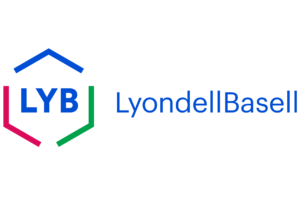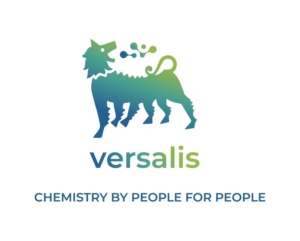COMMODITIES
Commodities are widely used polymers, applied in the most varied sectors: packaging, cosmetics, medical packaging, construction, consumer goods, automotive, electrical and industrial.
PP Homopolymer
A thermoplastic polymer obtained from the polymerisation of propylene with Ziegler-Natta catalysts. It is featured by a good level of stiffness and heat resistance.
Applications:
- Automotive
- Rigid and flexible packaging
- Consumer goods
- Sports & Toys
- Constructions
- Textiles
Processing technologies:
- Film extrusion
- Injection and compression moulding
- Extrusion-Blow Moulding
- Pipe and sheet extrusion
- Textiles (Melt Blown/Spun bond/Fiber)
- Thermoforming
- Compounding
Download Consumer Injection Moulding brochure
Download Caps, Closures & Tubes brochure
Download Pipe & Industrial Sheet brochure
PP Block Copolymer
A thermoplastic polymer obtained from the polymerisation of propylene and ethylene with Ziegler Natta catalysis. The material consists of an amorphous heterophasic structure, dispersed in a semi-crystalline homopolymer PP matrix.The main feature is an excellent shock resistance, even at low temperatures.
Applications:
- Automotive
- Rigid and flexible packaging
- Consumer goods
- Sports & Toys
- Constructions
Processing technologies:
- Film extrusion
- Injection and compression moulding
- Extrusion-Blow Moulding
- Pipe and sheet and profile extrusion
- Foam sheet extrusion
- Thermoforming
- Compounding
Download Consumer Injection Moulding brochure
Download Caps, Closures & Tubes brochure
PP Random Copolymer
A thermoplastic polymer obtained from the polymerisation of propylene with ethylene or butene as co-monomer. The main characteristics are high aesthetic quality (transparency and gloss) and good impact resistance.
Applications:
- Rigid and flexible packaging
- Industrial packaging
- Consumer goods
- Constructions
Processing technologies:
- Film extrusion
- Injection and compression moulding
- Extrusion-Blow Moulding
- Pipe and sheet and profile extrusion
- Thermoforming
- Compounding
Download Consumer Injection Moulding brochure
Downalod hostalen pp xn series pipe brochure
Download Caps, Closures & Tubes brochure
Polybutene-1
Polybutene-1 (PB-1) is a semi-crystalline thermoplastic polyolefin obtained from the polymerisation of Butene-1. Propylene and ethylene can be included as co-monomers. PB-1 is fully miscible with PP and has a low compatibility but good dispersibility with PE. Consequently, it is used extensively in Easy Peel applications.
Applications:
- Rigid and flexible packaging
- Compounding
- Consumer goods
- Textiles
Processing technologies:
- Bubble wrap extrusion
- Cast film extrusion
- Injection and compression moulding
- Textiles (Melt Blown/Spun bond/Fiber)
Catalloy
Using the licensed Catalloy technology, Lyondell Basell can manufacture a wide range of polyolefin thermoplastic elastomers with unique properties.
Applications:
- Automotive
- Rigid and flexible packaging
- Consumer goods
- Textiles
- Constructions
- Electrical appliances
Processing technologies:
- Bubble wrap extrusion
- Cast film extrusion
- Injection moulding
- Sheet and profile extrusion
- Membranes
- Textiles
- Compounding
- Extrusion-Blow Moulding
LD PE
Low density polyethylene (LD PE) is a semi-crystalline polymer obtained from a high-pressure tubular process, featured by branched polymer chains and a density of 0.910 – 0.930 g/cm3.
Applications:
- Packaging
- Compounding
- Consumer goods
Processing technologies:
- Bubble wrap extrusion
- Cast film extrusion
- Injection moulding
- Compounding
- Extrusion-Blow Moulding
Download Caps, Closures & Tubes brochure
MD PE
Medium density polyethylene (MD PE) is in between LDPE and HDPE, due to its structure obtained from a low-pressure polymerisation process. It has a density of 0.930 – 0.940 g/cm3
Applications:
- Flexible packaging
Processing technologies:
- Bubble wrap extrusion
HD PE
High-density polyethylene (HDPE) is obtained from a low-pressure ethylene polymerisation process in gas phase or slurry reactors using catalysts. The material is featured by linear polymer chains with single modal and multi modal molecular weight distribution and may contain small amounts of co-monomer (butene and hexene).
It is stronger and more rigid than LDPE due to its higher density of 0.940-0.965 g/cm3.
Applications:
- Automotive
- Rigid and flexible packaging
- Consumer goods
- Textiles
- Constructions
- Industrial packaging
Processing technologies:
- Bubble wrap extrusion
- Injection moulding
- Extrusion-Blow Moulding
- Pipe and sheet extrusion
- Textiles
Download Caps, Closures & Tubes brochure
Download Pipe & Industrial Sheet Europe brochure
Download HDPE LDPE injection molding applications brochure
Download HDPE PP small blow molding brochure
LLD PE
Linear low density polyethylene is produced by adding co-monomers such as butene, hexene and octene and is characterized by a density between 0.918 – 0.925 g/cm3. Its properties are related to the type of co-monomer and make it one of the main products for the packaging sector. Compared to LD PE, Linear low density PE presents higher resistance to tearing, impact and puncture.
Applications:
- Packaging
Processing technologies:
- Blown and cast film extrusion, Injection moulding
Medical PP - Purell
LyondellBasell has developed a dedicated product range to meet the needs of customers operating in the healthcare sector, the Purell product range.
Purell resins guarantee excellent aesthetics (transparency and gloss), excellent organoleptic properties, inertness to numerous chemical compounds and a wide range of mechanical properties. Grades of Polypropylene homopolymer, heterophasic copolymer, random copolymer are available.
Applications:
- 2 or 3 component syringes
- Laboratory equipment
- Primary and secondary pharmaceutical packaging
- Medical device components
- Diagnostic applications
- Caps and closures
Processing technologies:
- Bubble wrap extrusion
- Cast film extrusion
- Injection moulding
- Extrusion-Blow Moulding
Download LyondellBasell – PURELL brochure
Medical PE - Purell
LyondellBasell has developed a dedicated product range to meet the needs of customers operating or active in the healthcare sector, the Purell product range.
Purell resins guarantee excellent aesthetics (transparency and gloss), excellent organoleptic properties, inertness to numerous chemical compounds and a wide range of mechanical properties. Grades of Polyethylene low and high density are available.
Applications:
- Pharmaceutical packaging
- Medical device components
- Diagnostic applications
- Caps and closures
- Syringe components (pistons)
Processing technologies:
- Bubble wrap extrusion
- Cast film extrusion
- Injection moulding
- Extrusion-Blow Moulding
PS GP
Crystal Polystyrene is an amorphous thermoplastic polymer obtained from the polymerisation of styrene monomer. It is a completely transparent material with good stiffness, but is extremely fragile.
Applications:
- Packaging
- Consumer goods
- Refrigerator components
- Laboratory equipment
- Household goods
- Constructions
Processing technologies:
- Sheet extrusion
- Thermoforming
- Injection moulding
- Masterbatch and compounding
- XPS insulation panels
PS HI
Impact resistance Polystyrene is an amorphous thermoplastic polymer obtained from the polymerisation of styrene monomer, with the addition of a rubber phase. The rubber phase guarantees good impact resistance and flexibility but implies the transparency loss.
Applications:
- Packaging
- Consumer goods
- Refrigerator components
- Footwear
- Household goods
- Cosmetics
Processing technologies:
- Sheet extrusion
- Thermoforming
- Injection moulding





